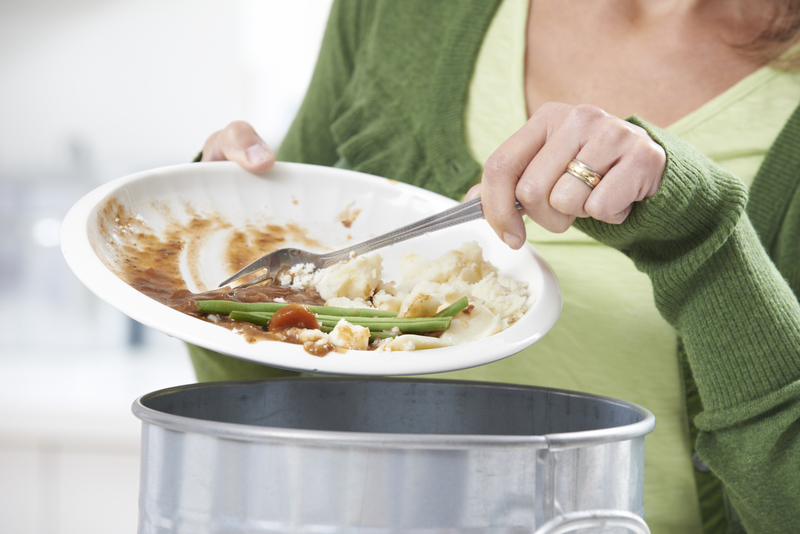Key Tips for Disposing of PPE Waste Responsibly
The widespread use of personal protective equipment (PPE) such as masks, gloves, gowns, and face shields has become commonplace due to increased health and safety measures globally. While these items play a crucial role in protecting individuals from viral and bacterial threats, their disposal raises significant environmental and public health concerns. Proper PPE waste management is not just the responsibility of healthcare workers, but of every individual and organization using these vital items. This comprehensive guide offers the key tips for disposing of PPE waste responsibly, helping reduce pollution and safeguard communities.

Understanding PPE Waste and Its Environmental Impact
What is PPE Waste?
PPE waste encompasses all discarded items used for personal protection against hazards, including but not limited to:
- Disposable face masks and respirators
- Nitrile, latex, and vinyl gloves
- Protective gowns and aprons
- Shoe and hair covers
- Plastic visors, goggles, and face shields
The majority of single-use PPE is made from synthetic plastics such as polypropylene and polyvinyl chloride (PVC), materials that are non-biodegradable and can persist in the environment for hundreds of years.
Impact of Improper PPE Disposal
Improper disposal of PPE can result in:
- Environmental pollution as plastics break down into microplastics, contaminating water and soil
- Wildlife threats from entanglement or ingestion of discarded PPE
- Potential spread of infectious diseases if contaminated waste is not segregated or treated effectively
- Blocked drainage systems leading to urban flooding and breeding grounds for disease vectors
Essential Tips for Disposing of PPE Waste Responsibly
1. Segregate PPE Waste Properly
The fundamental rule for responsible PPE waste disposal is segregation. Always separate PPE waste from regular household or office garbage.
- Use designated bins: Place clearly labeled, covered bins specifically for PPE disposal in easily accessible areas.
- Avoid mixing: Never mix PPE with recyclable materials, compost, or general waste to minimize contamination and simplify waste handling.
- Medical facility protocols: Healthcare institutions should follow biomedical waste regulations for PPE waste segregation, ensuring staff training on correct procedures.
2. Contain Contaminated PPE Carefully
Since used PPE may carry pathogens, ensure it's securely contained to prevent exposure:
- Bag it: Double-bag used masks, gloves, or other protective gear to limit leakage and contamination risk.
- Seal bags: Always seal or tie bags tightly before disposal, especially if the PPE was exposed to bodily fluids.
- Mark hazardous waste: For visibly contaminated items, use color-coded or biohazard-marked bags whenever possible.
3. Never Litter or Flush PPE Items
Flushing masks or gloves down toilets and drains can cause blockages, contribute to plastic pollution, and disrupt wastewater treatment systems. Likewise, littering PPE in public spaces, parks, or outdoor environments endangers animals and people alike. Always dispose of PPE waste in responsible, designated places.
4. Consider Reusable PPE Where Appropriate
Switching to reusable PPE for non-medical and low-risk scenarios can reduce overall waste volumes:
- Washable cloth masks: Use multi-layer cloth masks that can be sanitized and reused multiple times.
- Reusable face shields and goggles: Clean and disinfect after use, following manufacturer instructions.
5. Educate Staff and Community Members
Community-wide awareness is vital. Organize training and informational campaigns covering:
- Proper PPE waste handling
- Local PPE disposal guidelines and regulations
- Environmental and health risks of improper disposal
Special Considerations for Healthcare and High-Risk Environments
Biomedical PPE Waste Disposal Best Practices
Healthcare facilities, labs, and testing centers handle the majority of high-risk PPE waste. Best practices include:
- Stay compliant with local laws: Follow all regional and international standards (e.g., WHO, CDC, EPA, or local public health agencies) for biomedical waste disposal.
- Use color-coded waste systems: Typically, yellow or red bags/containers are for infectious or contaminated PPE waste.
- On-site storage: Store hazardous PPE waste in a secure location away from public or patient areas until collection.
- Document disposal: Maintain accurate records of waste generation, storage, transport, and destruction or treatment.
- Disinfection before disposal: When feasible, disinfect PPE items using autoclaving or chemical treatments.
Incineration vs. Sustainable Alternatives
Most medical PPE waste is traditionally incinerated to eliminate pathogens, yet this method can generate harmful emissions. Increasingly, facilities are exploring safer, greener alternatives such as:
- Advanced autoclaves (steam sterilization)
- Microwave-based waste treatment
- Chemical disinfection followed by shredding
- Non-burn technologies that neutralize contaminants without atmospheric pollution
By opting for these methods, institutions can reduce their environmental footprint from PPE waste.
Personal PPE Waste: Guidance for Households and Individuals
At-Home PPE Waste Disposal Instructions
Most households generate PPE waste in smaller quantities, but following correct procedures still matters greatly:
- Place used PPE in a separate lined bag: After use, immediately drop items like masks and gloves into a plastic bag specially designated for PPE.
- Double-bag and seal: When the bag is full, double-bag and tie tightly before putting it in general waste. Avoid squeezing or pressing the bag to minimize exposure.
- Wash hands thoroughly: Always sanitize or wash hands before and after handling used PPE.
- Do not recycle: Never place used PPE in recycling bins as it can contaminate recyclables and endanger workers.
Community Collection Initiatives
Many communities have set up special collection sites for PPE items. Taking advantage of these can help ensure that waste is treated and disposed of correctly. Always check with your local municipality for designated drop-off locations or instructions.
Recycling and Innovative Solutions for PPE Waste
Is PPE Waste Recyclable?
Most single-use PPE, such as disposable masks and gloves, contains multiple material layers and is contaminated post-use, making it unsuitable for conventional recycling streams. However, ongoing research and pilot programs from various organizations aim to recycle certain PPE items by:
- Mechanical shredding followed by plastic repurposing
- Thermal or chemical recycling processes to recover clean plastics
- Special industrial recycling systems able to handle complex materials
While these innovations hold promise, current household best practice remains: do not recycle used PPE with normal recyclables unless instructed by a recognized recycling program.
Participating in Specialized Recycling Programs
Some regions and businesses have introduced take-back or recycling programs for disposable PPE. Examples include:
- Collection bins in supermarkets or pharmacies for disposable masks
- Mail-back PPE recycling services for offices or schools
- Collaborations with waste management companies to upcycle PPE into new products
Supporting Sustainable Alternatives
Beyond disposal and recycling, advocate for and support the development of eco-friendly PPE made from biodegradable or compostable materials. These innovations promise to lessen the long-term environmental impact of protective equipment waste.
Legal Requirements and Workplace Responsibilities
Staying Compliant with Local Regulations
Many cities, states, and countries have enacted specific rules regarding PPE waste disposal. These may address:
- Segregation and labeling of PPE waste
- Mandatory use of color-coded bags/containers
- Handling and transfer/transport procedures
- Reporting and documentation obligations for businesses and healthcare facilities
- Ignorance of regulations can result in fines, legal action, or reputational damage. Always keep up-to-date with local guidance and train employees accordingly.
Workplace and Institutional PPE Waste Management
Employers and facility managers must take additional steps to ensure safe, legal, and responsible PPE disposal. These include:
- Providing adequate and accessible disposal bins across all premises
- Posting clear visual instructions for correct waste segregation
- Regularly inspecting and emptying bins to prevent overflow
- Collaborating with certified waste disposal contractors
- Integrating PPE waste protocols into broader environmental and health and safety policies

Practical Summary: Responsible PPE Waste Disposal at a Glance
Here are the key action points for safe PPE waste disposal for everyone:
- ALWAYS dispose of used PPE in specially provided bins or bags, never on the ground or in toilets.
- NEVER recycle contaminated single-use PPE with regular recyclables unless through special programs.
- MAKE USE of community collection or corporate take-back schemes if available.
- TRAIN all users on correct disposal and handling procedures, highlighting health and ecological risks.
- CONSIDER reusable or sustainable PPE options wherever possible and safe to do so.
- STAY INFORMED by keeping up-to-date with the latest regional guidelines and waste management innovations.
Conclusion: Why Responsible PPE Waste Disposal Matters
The responsible disposal of PPE waste is a fundamental aspect of modern public health and environmental protection. Failure to manage PPE waste correctly can worsen the pollution crisis, harm wildlife, and endanger sanitation workers and the public alike. By following the key tips for disposing of PPE waste responsibly--from segregation to specialized recycling and awareness--individuals, households, and organizations can all play a part in building a cleaner, safer, and more sustainable future.
Wise and eco-friendly PPE waste management is not just a response to today's health crises but an investment in the planet's health for generations to come. Start making a difference today by adopting these best practices and spreading the message about the importance of proper PPE waste disposal.
